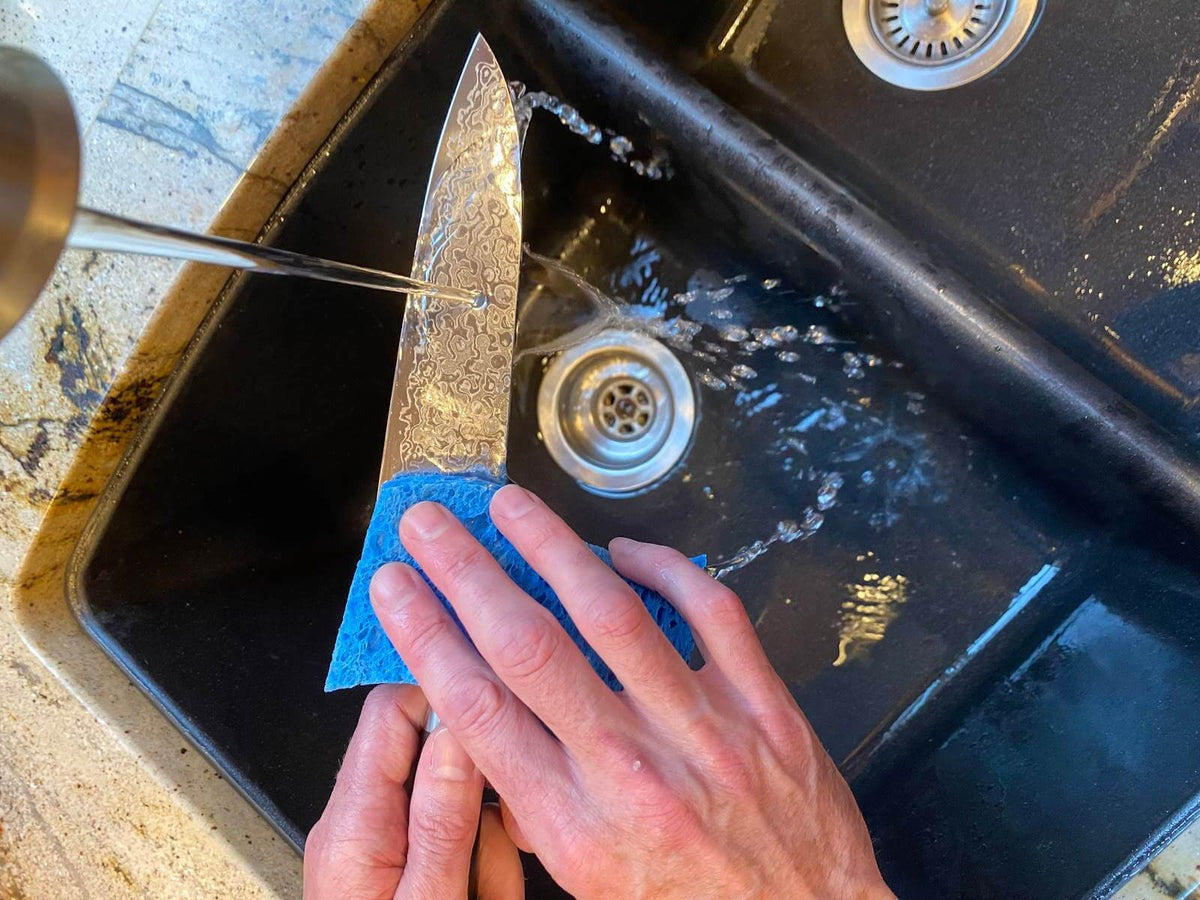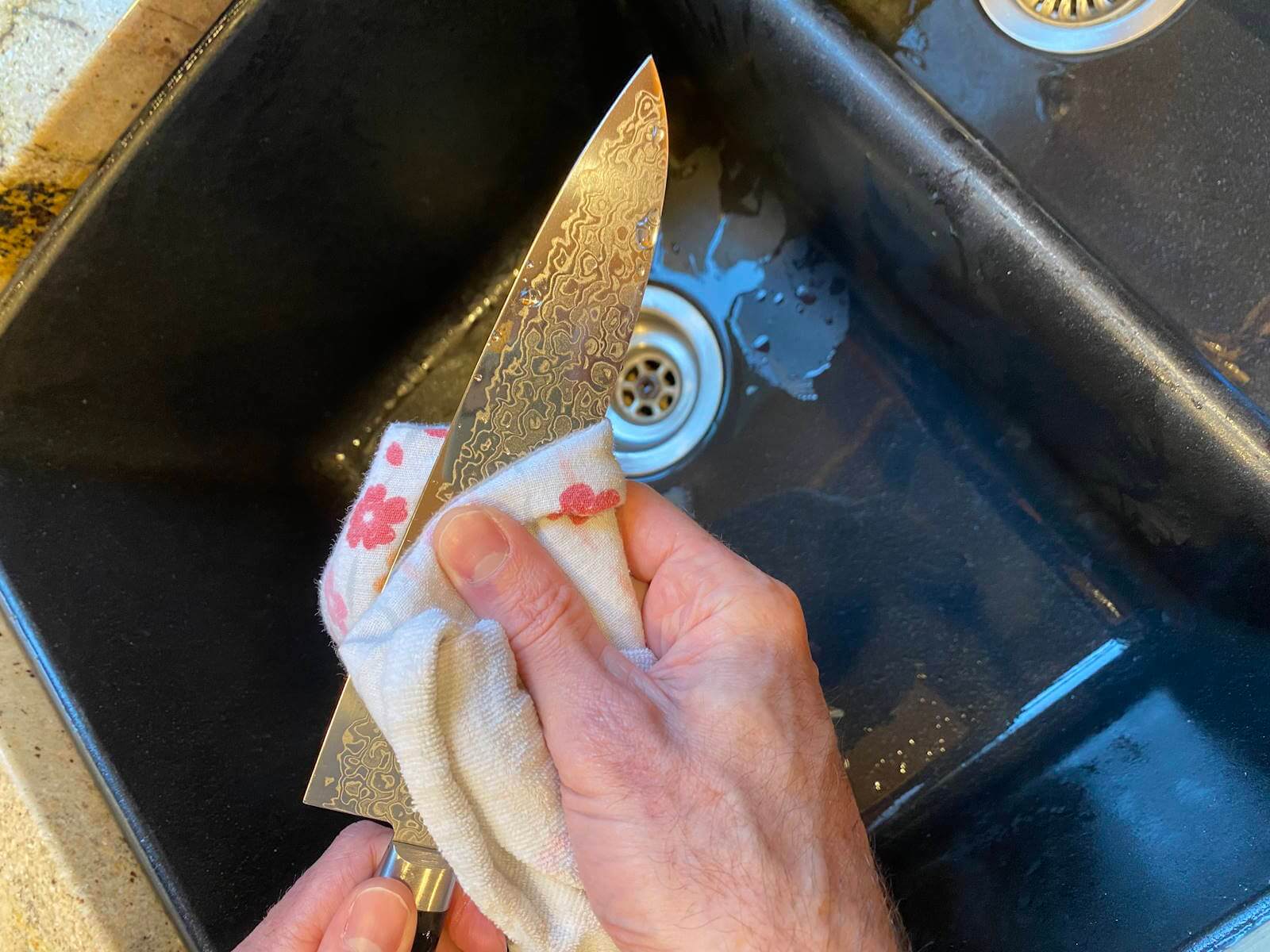
How to Choose A Chef’s Knife: Exploring the Art of Japanese Knives
If you need guidance on selecting a chef’s knife, consider the rich history of samurai sword-making. Centuries of expertise and tradition are reflected in each blade. Choosing the right kitchen knife means picking a reliable companion. A well-crafted knife enhances your cooking experience and helps refine your knife skills over time.
The vast array of options may seem overwhelming. However, this guide will show you how to choose your first Japanese knife. With some research, your kitchen knife will transport you to the essence of ancient Japan.
How to Choose Your First Japanese Kitchen Knife
When selecting your first Japanese kitchen knife, consider key factors such as balance, weight, steel type, and handle material.
Price and style also play an important role in the decision. Japanese cutlery offers a distinct craftsmanship that sets it apart. Exploring these unique qualities will help you find the right chef’s knife for your needs.
Understanding the Cost and Quality of Japanese Kitchen Knives
Cost can be a concern when deciding on a chef's knife. While some Japanese knives are expensive, there is a wide range of options that give excellent value. Japanese knives are renowned worldwide for their exceptional craftsmanship and quality. The cost associated with choosing these kitchen knives comes from several factors.
- Master blacksmiths spend decades honing their skills, resulting in high demand and expensive craftsmanship.
- Traditional Japanese knife-making requires years of training and expertise.
- Blacksmiths often specialize in various aspects of knife production, including forging, sharpening, polishing, and installing handles.
- High-grade materials for the blade and handle add to the overall cost.
Japanese knives stand out due to their construction. When considering how to choose a chef’s knife, you’ll find that the Japanese style incorporates two types of metals forged together: a steel core for the cutting edge and a lower-carbon iron for added malleability and rust resistance. This fusion creates knives of exceptional quality, combining strength with razor-sharp precision.
How to Choose a Japanese Knife
There are many types of Japanese kitchen knives, each tailored to a specific purpose. These knives are indispensable in the country’s cuisine, which enables precise cuts for fish and vegetables. However, when deciding how to choose a chef’s knife, you’ll likely begin with the most popular types.
These are Gyuto, Santoku, and Nakiri.
Gyuto

Gyuto knives are the Japanese interpretation of the European chef’s knife. With a general blade length of 180-300mm (7”-11.8”), the Gyuto features a slender form, a long, pointed blade, and a narrow width.
This all-purpose knife excels at cutting large pieces of meat and vegetables. The term “Gyuto” translates to “cow sword” in Japanese. However, there may be better choices for slicing large produce or delicate work.
Santoku
The Santoku knife, which translates to "three virtues," is Japan’s take on the classic chef’s knife. Its blade typically ranges from 160mm to 180mm (6.3” to 7”) in length.
Designed for versatility, it excels at chopping, slicing, and dicing. This knife handles meat, fish, and vegetables with ease. For this reason, it’s a valuable tool in any home kitchen.
Nakiri

When preparing vegetables, chefs choose Nakiri knives. The name “Nakiri” translates to “greens cutter” in Japanese. These knives feature a rectangular blade shape without a sharp tip, typically ranging from 150mm to 180mm (5” to 7”) in length.
With an even blade width, Nakiri knives effortlessly cut through large ingredients with minimal force. They are incredibly convenient for slicing bigger vegetables like lettuce and Chinese cabbage. Their strength makes them a great option when choosing an all-purpose kitchen knife.
How to Choose a Japanese Sushi Knife
If you’re making sushi, choosing a chef knife is simple. The sushi knife, or sashimi knife, is a long, slender blade that is excellent at filleting and slicing fish.
Now, let’s explore the precision side of how to choose a chef’s knife.
Yanagiba
The Yanagiba knife has a long, thin blade and a single bevel. It’s prized for slicing sashimi and creating clean, precise cuts. The blade length of Yanagiba knives typically ranges from 210mm to 360mm (8.3” to 14.2”).
The Shobu knife is a variation of the Yanagiba knife. It shares most characteristics of the Yanagiba but has a uniquely curved back and is commonly a tool for slicing sashimi.
Takohiki
Often used for delicate cuts, such as slicing sashimi, Takohiki knives feature a single bevel similar to the Yanagiba, but with a squared-off tip. The blade length of Takohiki knives typically ranges from 240mm to 300mm (9.4” to 11.8”).
Sujihiki
The Sujihiki knife, also known as the slicing knife, is a double-bevel knife. Choose this chef’s knife for slicing meat, fish, and sashimi. It has a long, narrow blade with a pointed tip. The blade length of Sujihiki knives typically ranges from 240mm to 300mm (9.4” to 11.8”).
Deba
The hefty design of Deba knives makes cutting and filleting fish a breeze. It is a heavier knife compared to others, making it one of the best for cutting through fish bones. The blade is wide and thick, often sporting an obtuse-angled edge. Deba knives are available in various blade lengths, ranging from 90mm to 300mm (3.5” to 11.8”).
The single bevel of the knife prevents fish and meat from sticking to the blade. This allows for smooth cutting without destroying the flavor or texture of the ingredients.
How to Choose a Chef’s Knife by Blade Material
High Carbon Steel
High-carbon steel knives are known for their exceptional sharpness and edge retention. This makes them the choice for countless culinary enthusiasts. It can be harder to sharpen, but the razor-sharp edge ensures precise cuts.
In addition to its edge, over time, high-carbon steel develops a patina. This natural oxidation forms a layer that helps protect the blade from rusting and gives it a unique appearance.
Stainless Steel
While stainless steel blades may not offer the same sharpness and edge retention level as high-carbon steel, they perform admirably in the kitchen.
Stainless steel blades are resistant to rust and corrosion, making them ideal for those who prefer low-maintenance options when considering how to choose a chef’s knife. They are also less likely to chip than high-carbon steel. For first-time users, selecting a stainless-steel kitchen knife is often recommended due to its ease of upkeep.
However, if you’re willing to invest time in maintenance and want exceptional sharpness and aesthetic appeal, high-carbon steel knives like those made from white steel or blue steel can provide a remarkable cutting experience.
How to Choose a Chef’s Knife by Shape and Material
Shape
Traditional Japanese knife handles are typically round, octagonal, or oval in shape. These shapes provide a lighter and more maneuverable feel in the hand, allowing precise movements during cutting tasks. In contrast, Western-style handles have a flared end and a swelled-out portion that fits in the palm, providing a more substantial grip.
Material
Considering the handle’s material is another factor in how to choose a chef’s knife. Handles can feature various materials, including woods like ebony, Spanish mahogany, magnolia, walnut, wenge, and persimmon or hard plastics. The choice of handle material is primarily a matter of personal preference.
If you appreciate the beauty of natural wood and desire a unique handle, natural wood handles, such as ebony or magnolia, are an excellent choice. Hard plastic handles are a popular choice for their ease of maintenance and durability, as they resist wear over time.
What’s a Tang?
A knife’s tang is the blade section extending into the handle. When choosing a Japanese kitchen knife, you’ll find many partial tang handles. This design is where the steel inserts into only one-third to one-half of the handle.
In contrast, Western-style knives are often full tang, extending the entire length of the handle. Choosing a chef’s knife with the right handle often comes down to personal preference and the specific tasks you’ll perform.
One of the benefits of a partial tang knife is that often the part of the knife that needs replacing is the handle. With a partial tang knife, the handle can be much more easily replaced than a full tang handle.
Japanese Knife Care
After choosing a chef’s knife, caring for it helps maintain its longevity and preserve its quality. Here are some tips for maintaining and caring for your Japanese knives.
Cutting
- Avoid cutting through bone or frozen foods. Most Japanese knives are designed for precision cuts, not for heavy-duty tasks like bone cutting, which can damage the blade.
- Maintain a straight motion rather than twisting the knife while cutting. Twisting can increase the risk of chipping or cracking the blade.
- Use a cutting board made of natural wood or a plastic alternative. Hard surfaces like glass or marble will quickly dull the knife’s edge. A cutting board made from end-grain wood provides the best surface for edge retention.
Washing
- Opting for a chef’s knife comes with the responsibility of handwashing. Dishwashers subject knives to extreme heat, powerful water jets, and harsh detergents, which can damage both the blade and handle.
- Clean your knives gently by hand. Use a soft sponge or cloth with mild soap and warm water. Avoid abrasive cleaners or scrubbing pads, as they can damage the knife’s surface.
- After hand-washing your knives, immediately dry them thoroughly to prevent rusting. Do not air dry them, as moisture can lead to rust formation.
Storage
- Picking a kitchen knife block or a magnetic knife wall will protect your blades from damage and ensure they are easily accessible.
- If storing them in a kitchen drawer, use knife protectors or sheaths to protect the blades from other utensils and prevent accidental damage.
- When transporting your knives, use a saya (a traditional Japanese knife cover) or a knife protector to keep them safe.
Sharpening
- The frequency of sharpening depends on usage. When you choose a chef’s knife for home use, sharpen whenever the knife feels dull. Professional chefs may need to sharpen their knives daily.
- Avoid using honing rods on single-bevel knives. Instead, use a toishi sharpening stone, which Japanese blacksmiths recommend for single-bevel and double-bevel knives.
- You can always use professional sharpening services if you haven’t sharpened knives before and would like help.
Now You Know How to Choose a Chef’s Knife
Choosing a kitchen knife is an investment that can pay dividends in the kitchen. And like the legacy of craftsmanship that goes into crafting each blade, it can last for generations.
Regardless of the Japanese chef knife you choose, they are not only practical kitchen tools---they are works of art with a rich cultural heritage. Your chef’s knife is the tool you choose to elevate your kitchen skills. With proper care, it will become an extension of your imagination.
Need More Help?
Don’t worry. Let us help! Contact us. We’ll guide you through choosing a kitchen knife for your needs. We also offer detailed product descriptions, professional guidance, and customer support.
Hasu-Seizo makes it simple to choose your first Japanese kitchen knife.


